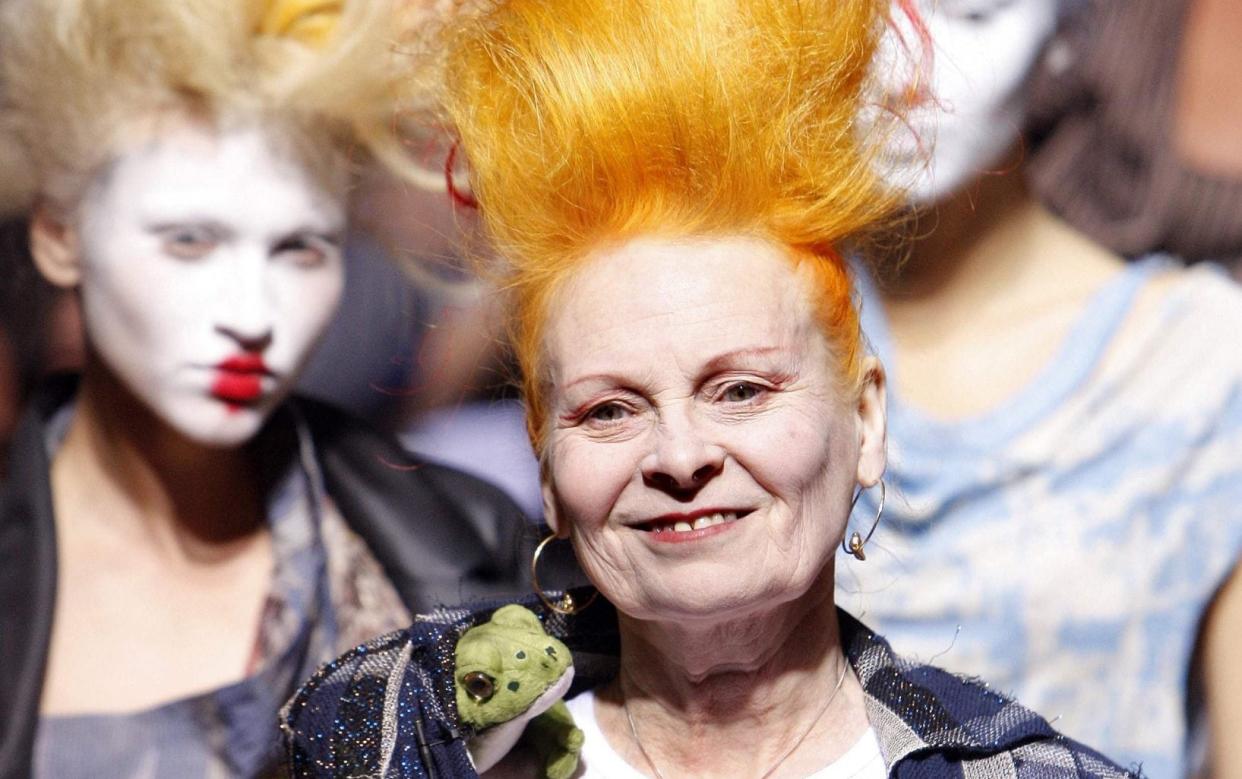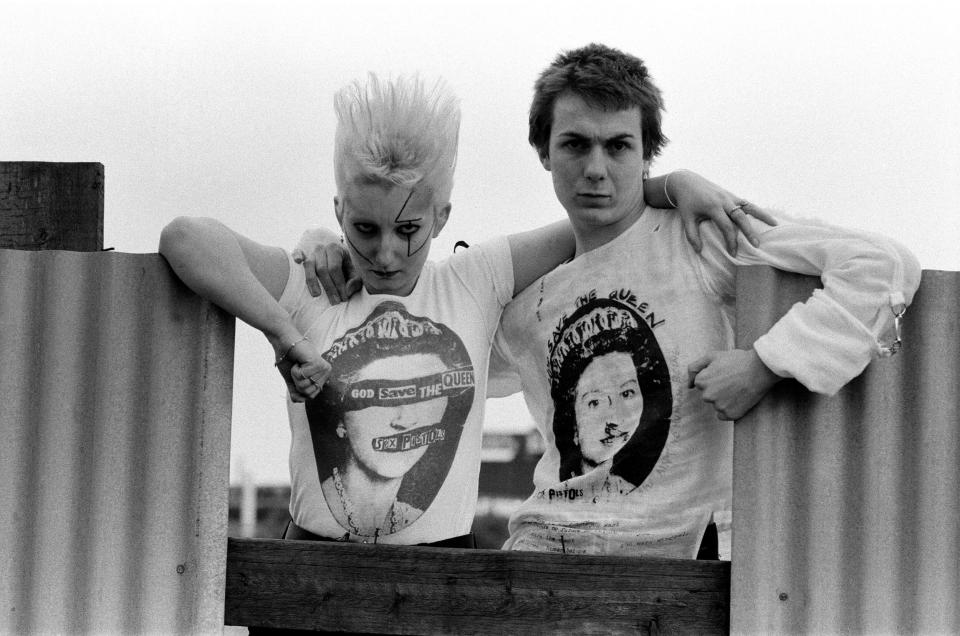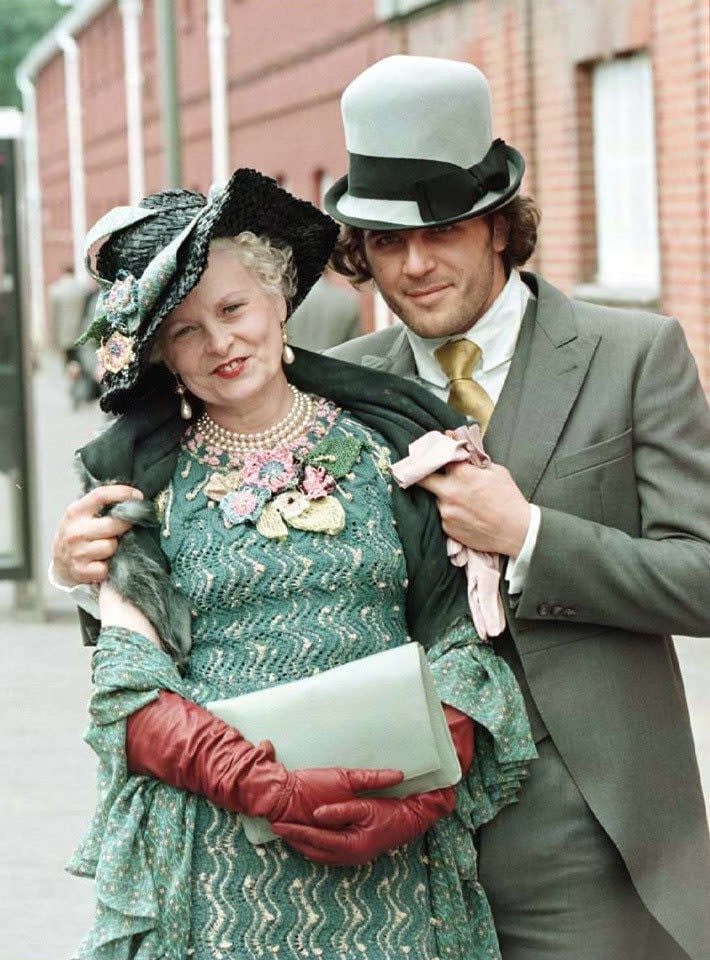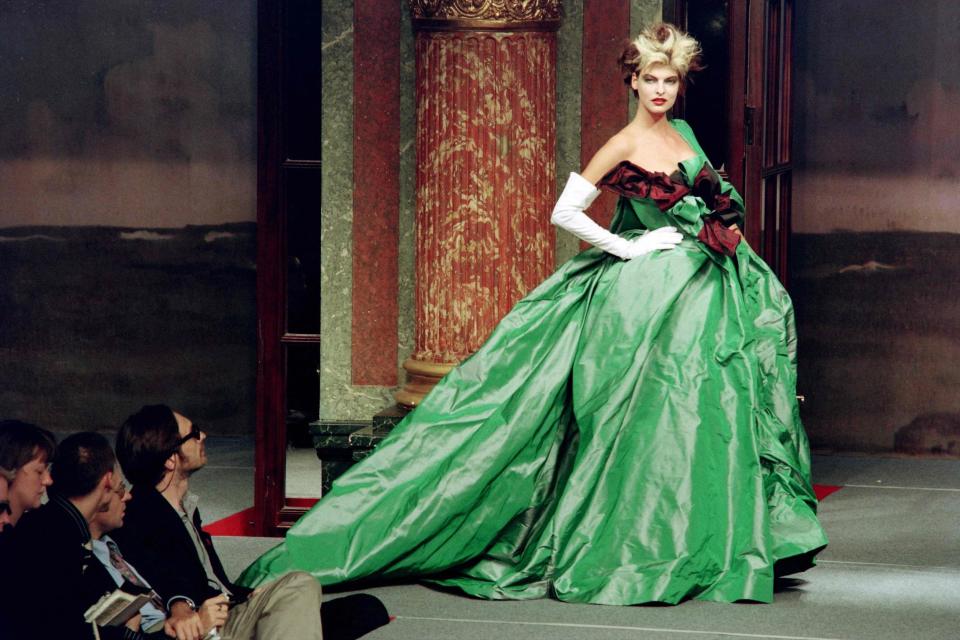Dame Vivienne Westwood, subversive and influential Queen of British fashion – obituary

Dame Vivienne Westwood, the designer, who has died aged 81, was one of the most radical and important figures in British fashion; exciting and outrageous – her collections were variously described as “brilliant” and “unwearable” – her influence extended far beyond her commercial success.
She originally gained attention as the creator of the punk rock image of spiky hair safety pins and bondage trousers, and the shop she owned with Malcolm McLaren became the base of the Sex Pistols and the spiritual home of punk. It was a spirit – iconoclastic, subversive, individual – that informed her entire career.
Puffing Gitanes, Vivienne Westwood graduated from punk to create a body of work that included some of the most original clothes of the age. She assimilated a wide range of cultural and historical references and revived Victorian crinolines, platform shoes and corsets. Although criticised for their impracticality, her designs were regularly and successfully appropriated (in toned-down versions) by her competitors.
Neither success nor influence diminished her inventiveness and although Vivienne Westwood ended her career cast as a great British eccentric, she never lost the spikiness that was the engine of her ambition.

Vivenne Isabel Swire was born at Glossop, Derbyshire, on April 8 1941. She was educated locally and betrayed an early interest in couture when, against her mother’s wishes, her first clothes purchase was “a sexy, tight pencil skirt and really high heels”.
After Harrow School of Art she attended teacher training college and became a primary school teacher. In 1970 she left her job and her husband, Derek Westwood, to become romantically and commercially involved with the former “Situationist” Malcolm McLaren, with whom she opened a boutique at World’s End in the King’s Road, Chelsea.
Let it Rock retailed Fifties revivalist clothes based on Teddy Boys’ fashions. They evolved into selling leather jackets and biker fashions and changed the name to Too Fast To Live Too Young To Die. But Vivienne Westwood was arguably the first designer to appreciate the subversive power of confrontational clothing, and by 1974 they had changed the name to SEX and were selling rubber and bondage designs more often associated with the world of S&M than high street fashion.
“Sex is fashion,” Vivienne Westwood declared; the fascination of bondage clothes was that they were “ostensibly restricting but when you put them on they gave you a feeling of freedom.” In an era when clothes still had the power to shock, Westwood and McLaren acquired a small but dedicated clientele of outcasts and rebels attracted to the shop with the word SEX above the door in giant inflatable pink letters.
In 1975 the American proto-punks the New York Dolls visited the shop; the mercurial McLaren returned with them to America where he briefly became their manager as the band imploded. Inspired by the idea of creating a band specifically to advertise his shop, he put together four disparate youths who loitered in the boutique as the Sex Pistols. From the outset, musical ability was deemed tertiary to image and attitude, the image supplied by Vivienne Westwood, the anarchical attitude by the band themselves.
Through 1976 the band built a loyal and exotic looking fan-base and inspired a catalogue of bands such as the Clash and the Damned to form. By the summer of 1977, punk rock – abetted by a notorious interview when the Sex Pistols swore on prime-time television – had exploded into the national consciousness.
The Sex Pistols’ image was the punk image. Bondage suits, inflammatory T-shirts and ripped clothing worn with zips, chains, safety pins, slogans, metal studs, brothel creepers offset dramatic hairstyles and pierced faces. Vivienne Westwood’s radical vision was modelled by punk rockers everywhere and effortlessly expressed in the sightless stare and sneering, nihilistic intelligence of the group’s singer, Johnny Rotten.

In late 1977 SEX was renamed Seditionaries because Vivienne Westwood felt that the shop, like punk, was inherently political and she wanted to “seduce people into revolt”.
But the punk era was almost over. The Sex Pistols imploded in January 1978; the record companies signed and repackaged the major groups as money-makers, and only a few recidivist spiky heads were left bashing out mayhem, unaware that the world had moved on. Punk, she told an interviewer in 2000, had been “a heroic attempt at confronting the establishment ... but ultimately it failed”.
Realising that punk had been folded into mainstream culture, Vivienne Westwood sought a new direction and turned to history for inspiration. She renamed the shop – again – World’s End in 1980 and the following year presented a collection based on the romantic image of the pirate. Her show, which was the first major collection presented by a British designer in Paris since Mary Quant, directly inspired the former punk Adam Ant to shed his punk image and enjoy a successful pop career wearing a tricorn and carrying a cutlass.

Her change of direction also inspired the New Romantic groups who emulated her appropriation of history by appearing in costumes more appropriate to 17th-century Versailles, while Vivienne Westwood became the designer of choice for pop stars ranging from Culture Club’s Boy George to Bananarama.
Like a pirate Vivienne Westwood was determined to “plunder the world of its ideas”. A voracious reader given to intellectual pretension, she was eclectic in her sources. The “Savages Collection” (1982) gravitated towards a tribal look based on oversized clothes with exposed seams manufactured in rough fabrics, while subsequent shows – Buffalo, Hoboes, Witches, Punkature – mined a range of subcultures.
In 1984 she split from McLaren. They remained friends whenever he was not claiming the credit for her work, but the break-up ended any lingering interest in punk.
In 1985 she launched the “mini–crini”, a short hooped skirt inspired by the Victorian crinoline and worn with a tailored jacket and high-heeled shoes. She said she “liked to take something from the past which has a sort of vitality which has never been exploited.” Criticised for its impracticality, the idea was nevertheless successfully appropriated by Christian Lacroix.

Focusing on the 18th and 19th centuries, Vivienne Westwood revived the bustle and the corset – both as under- and outerwear – in order to emphasise the beauty of the female form and indulge a love of accessories that harked back to a more leisurely age. She was critical of designers who reworked the recent past, including her own work, accusing them of a lack of courage and confidence.
They were not qualities Vivienne Westwood lacked; her confidence inclined to boastfulness, as when she claimed “No one else has any taste.” She considered casual dressing to be indicative of a “sloppy mediocrity” to which her own work, which she described as “beauty and form and chic”, was an antidote.
The styles and motifs she plundered from history were always refracted through her unique vision, and her colour schemes and fabric combinations always subverted expectations. Thus she could appropriate the traditional symbols of royal authority – an ironic take on power dressing – or present a twinset and tweed that one critic described as resembling “Miss Marple on acid”. In 1989 she famously posed for a Tatler magazine cover as Margaret Thatcher, wearing a suit that the then prime minister had ordered but later, perhaps understandably, cancelled.

But however radical her collections Vivienne Westwood always sought to explore and amplify the beauty and femininity of her models. Platform shoes were intended to place the model on a pedestal, though there was always the risk of toppling, as Naomi Campbell famously did in 1993 – the shoes ending as exhibits in the V&A. The wire cage she constructed to be worn under a dress was devised to accentuate an idealised form of large hips beneath a slim waist. Kate Moss appeared in a pelmet–sized mini skirt with no top, while a virtual bodysuit left almost nothing to the imagination.

Vivienne Westwood was an effortless self-publicist through her own clothing. She wore bondage outfits long before such garments had left the dungeons for the fashion pages; arriving at Buckingham Palace for her OBE investiture in 1992, she twirled for the cameras only to reveal no underwear; she attended at a dinner at Kensington Palace in a dress which, under the glare of the paparazzi, was transparent. In 2006 when she was appointed DBE, she arrived at Buckingham Palace wearing a pair of silver horns (and no underwear). Her clothes, like her personality, stood as a permanent critique of mass production.
In the 1990s she and her business partner, Carlo D’Amario, launched a range of budget fashions and expanded into menswear where she re-utilised many of the motifs and ideas (such as platform brogues)from her female collections.
Vivienne Westwood was the subject of numerous retrospectives. She was British Designer of the Year in 1990 and 1991 and was Professor of Fashion at the Vienna Academy of the Applied Arts between 1989 and 1991.

Despite her status as Britain’s favourite eccentric, Vivienne Westwood never lost her vitriol or her flat Derbyshire vowels. In later years she became, if anything, even more politically vocal, championing issues such as nuclear disarmament and protesting against anti-terrorism laws and government policies that harm the poor. In 2014 she shaved off her hair to raise awareness of climate change. In 2016 her spring/summer show featured placards with the slogans “fracking is a crime” and “austerity is a crime”.
Her political allegiances could be volatile, however. In 2007 she announced that she had transferred her support from Labour to the Conservatives over issues of civil liberties and human rights. In 2015 she declared her support for the Green Party and drove a tank to the then prime minister David Cameron’s home in Oxfordshire to protest against fracking. By 2017 she was backing Jeremy Corbyn.

A long-time supporter of Julian Assange, she presented “I am Julian Assange” T-shirts at London Fashion Week in 2012, and in 2020, clad in canary yellow, she suspended herself in a birdcage outside the Old Bailey in a protest against the Wikileaks founder’s possible extradition from the UK.
She remained a rebel to the end, expressing support on her website No Man’s Land for the protesters who threw tomato soup at Van Gogh’s Sunflowers in November: “Young people are desperate. They’re wearing a T-shirt that says: Just Stop Oil. They’re doing something.”
In private, however, there lurked a very different woman. A fellow guest at a party found her “very normal, rather shy even, not at all what you might have expected”.
With her first husband, Derek Westwood, she had a son. She also had a son by Malcolm McLaren (Joe Corré, co-founder of the lingerie company Agent Provocateur). In 1992 she married Andreas Kronthaler, a former student of hers at the Vienna School of Applied Art. He became a silent design partner and creative director of the Vivienne Westwood label and in 2016 she renamed the brand’s main “Gold Label” collection Andreas Kronthaler for Vivienne Westwood.
He survives her with her children.
Dame Vivienne Westwood, born April 8 1941, died December 29 2022

 Yahoo News
Yahoo News 
